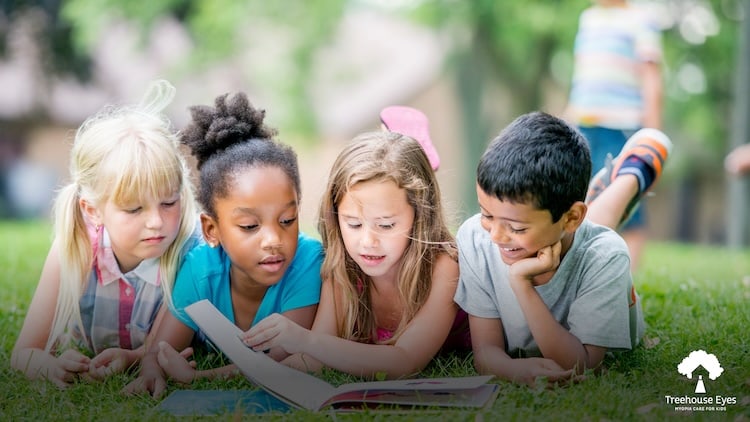Recognizing Signs of Nearsightedness in Your Child
As parents, ensuring the health and well-being of our children is paramount.

When it comes to their vision, early detection of issues like nearsightedness (myopia) is crucial for timely intervention and effective management. Myopia can impact a child’s academic performance, social interactions, and overall quality of life if left unaddressed. In this article, we’ll highlight key signs that parents should watch for to identify if their child may be experiencing nearsightedness.
Frequent Squinting:
One of the most common signs of nearsightedness in children is squinting. If you notice your child squinting often, especially when trying to see distant objects like road signs or the whiteboard at school, it could indicate that they are having difficulty focusing on distant objects.
Sitting Close to the TV or Holding Devices Close:
Children with nearsightedness may instinctively sit closer to the television or hold digital devices closer to their face to see more clearly. While occasional closeness to screens is common, persistent behavior of this nature could be a red flag for myopia.
Complaints of Headaches or Eye Strain:
Children experiencing nearsightedness may complain of frequent headaches or eye strain, particularly after engaging in activities that require focusing on distant objects for extended periods, such as reading or watching movies in a theater.
Difficulty Seeing the Whiteboard or Screen at School:
If your child consistently has difficulty seeing the whiteboard or screen in the classroom, despite sitting in the front rows, it could indicate nearsightedness. They may also struggle to recognize faces or objects from a distance.
Rubbing Eyes Frequently:
Excessive rubbing of the eyes can be a sign of eye fatigue or strain, which often accompanies nearsightedness. If you observe your child rubbing their eyes frequently, especially after engaging in activities that require visual concentration, it’s worth investigating further.
Decline in Academic Performance:
Unexplained declines in academic performance, particularly in subjects that require visual acuity like reading or math, may be attributed to undiagnosed nearsightedness. If your child’s grades suddenly drop or they express frustration with schoolwork, consider scheduling an eye exam.
Family History of Myopia:
Genetics play a significant role in the development of myopia. If one or both parents have myopia, there’s an increased likelihood that their children will also develop the condition. Keep this in mind and remain vigilant for signs of nearsightedness in your child, especially if there’s a family history.
Let Treehouse Eyes Help Manage Your Child’s Myopia:
Recognizing the signs of nearsightedness in your child early on is essential for proactive intervention and effective management. If you observe any of the aforementioned signs or have concerns about your child’s vision, don’t hesitate to schedule an myopia consultation with a Treehouse Eyes provider. Remember, addressing vision issues promptly can significantly impact your child’s overall well-being and success in various aspects of life. Let’s work together to ensure our children’s vision remains clear for a bright future ahead.